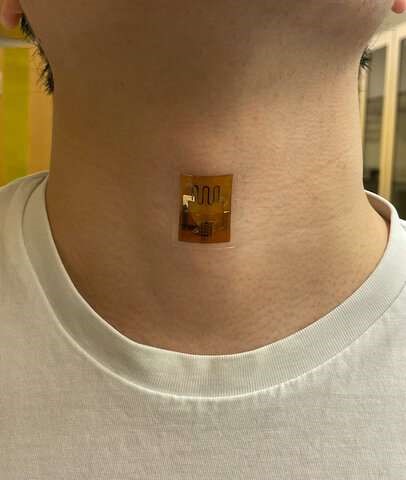
Producing long-term, continuous electricity from sweat
The limiting factor of wearable electronics, has always been the power supply. Batteries run down and have to be changed or charged. They are also bulky, heavy, and uncomfortable.
But a clear, small, thin flexible biofilm that produces a continuous and steady supply of electricity and which can be worn, like a Band-Aid, as a patch applied directly to the skin, solves all these problems.
Researchers recently announced that they have figured out how to engineer a biofilm that harvests the energy in evaporation and converts it to electricity.
This biofilm, which was announced, has the potential to revolutionize the world of wearable electronics, powering everything from personal medical sensors to personal electronics.
The biofilm—is a thin sheet of bacterial cells about the thickness of a sheet of paper—produced naturally by an engineered version of the bacteria known to produce electricity and has been used previously in "microbial batteries" to power electrical devices. By contrast, this new biofilm, which can supply as much, if not more, energy than a comparably sized battery, works, and works continuously.
The secret behind this new biofilm is that it makes energy from the moisture on your skin. Since the surface of our skin is constantly moist with sweat, the biofilm can "plug-in" and convert the energy locked in evaporation into enough energy to power small devices.
Researchers next step is to increase the size of the films to power more sophisticated skin-wearable electronics, and to power entire electronic systems, rather than single devices.
 English
English Arabic
Arabic


